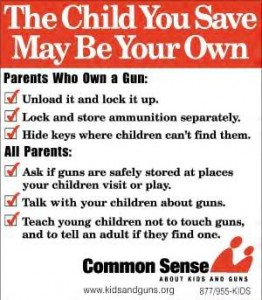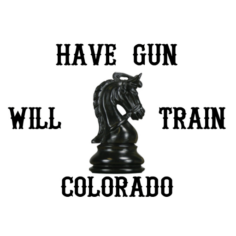PARENT GUIDE TO GUN SAFETY

The Parents’ Responsibility
In a home where guns are kept, the degree of gun safety a child has rested squarely on the child’s parents. Parents who accept the responsibility to learn, practice and teach gun safety rules will ensure their child’s safety to a much greater extent than those who do not. Parental responsibility does not end, however, when the child leaves the home.
Talking with Your Child About Gun Safety
There is no particular age to talk with your child about gun safety. A good time to introduce the subject is the first time he or she shows an interest in firearms, even toy pistols or rifles. Talking openly and honestly about gun safety with your child is usually more effective than just ordering him or her to “Stay out of the gun closet,” and leaving it at that. Such statements may just stimulate a child’s natural curiosity to investigate further.
Toy Guns vs Real Guns
It is also advisable, particularly with very young children, to discuss gun use on television as opposed to gun use in real life. Firearms are often handled carelessly in movies and on TV. Additionally, children see TV and movie characters shot and “killed” with well-documented frequency. When a young child sees that same actor appear in another movie or TV show, confusion between entertainment and real-life may result. It may be a mistake to assume that your child knows the difference between being “killed” on TV and in reality.
What Should you teach your child about Gun Safety?
If you have decided that your child is not ready to be trained in gun handling and Gun Safety, teach him or her to follow the instructions of NRA’s Eddie Eagle GunSafe® Program. If you find a gun:
STOP!
Don’t Touch.
Leave the Area.
Tell an Adult.
The initial steps of “Stop” and “Don’t Touch” are the most important. To counter the natural impulse to touch a gun, it is imperative that you impress these steps of the safety message upon your child.
In today’s society, where adult supervision is not always possible, the direction to “Leave the Area” is also essential. Under some circumstances, the area may be understood to be a room if your child cannot physically leave the apartment or house.
“Tell an Adult” emphasizes that children should seek a trustworthy adult, neighbor, relative or teacher — if a parent or guardian is not available.
This Kids with Guns Video gives you a good look at gun safety why this training is so important for your children.
And for the rest of us here is the basic gun safety rules that always apply
Four Rules introduced by Colonel Jeff Cooper, which are:
- All guns are always loaded.
- Never let the muzzle cover anything you are not willing to destroy.
- Keep your finger off the trigger until your sights are on the target.
- Be sure of your target and what is beyond it.
Jeff Cooper
The NRA provides a similar set of gun safety rules:
- ALWAYS keep the gun pointed in a safe direction.
- ALWAYS keep your finger off the trigger until ready to shoot.
- ALWAYS keep the gun unloaded until ready to use.
The National Rifle Association, The fundamental NRA rules for safe gun handling
The Canadian Firearms Program uses the concept of The Four Firearm ACTS:
- Assume every firearm is loaded.
- Control the muzzle direction at all times.
- Trigger finger off trigger and out of trigger guard.
- See that the firearm is unloaded. PROVE it safe.
Canadian Firearms Centre, The Four ACTS of Firearm SafetyRefrences:
